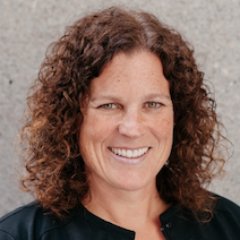 My guest in this edition of Inside Personal Growth is Shannon Bryne Susko, author of a new book entitled “Metronomics: One United System to Grow Up Your Team, Company, and Life.” Shannon is the CEO and Founder of Metronome United, an online training platform that helps CEOs and their leadership teams grow confidently and predictably.
My guest in this edition of Inside Personal Growth is Shannon Bryne Susko, author of a new book entitled “Metronomics: One United System to Grow Up Your Team, Company, and Life.” Shannon is the CEO and Founder of Metronome United, an online training platform that helps CEOs and their leadership teams grow confidently and predictably.
In our interview, we speak about company growth, team alignment and leadership. Shannon is very good at what she is doing to help companies find and identify pain points, relieve those pain points, and help them grow through it and make their company stronger and better on the other side.
If you want to learn more about growing your business, strategic execution plans, business growth barriers and leading with speed and confidence, you will love this engaging interview with Shannon Susko about her new book, “Metronomics: One United System to Grow Up Your Team, Company, and Life.”
To learn more about Shannon, he books and coaching programs, please click here to visit her website.
Happy Listening!
THE BOOK
Metronomics unites top business thought leadership with over twenty years of proven practical experience. The outcome is a prescriptive progressive growth system for every business. In this book, you’ll learn how to build a high-performing business team that achieves superior results with ease, speed, and confidence. You’ll learn the practical progression that ensures your team is fiercely connected to your strategic execution system. No matter what level you and your team are at right now, Metronomics will meet you where you are—and grow with you to the next level and beyond.
The best-kept business secret for the past twenty years, Metronomics will allow your company to win your business Olympics every year, and as a leader, it will set you free.
THE AUTHOR
CEO & FOUNDER OF METRONOME UNITED | SERIAL ENTREPRENEUR | BUSINESS COACH | KEYNOTE SPEAKER | BEST SELLING AUTHOR
Shannon has more than twenty years of experience building and leading high-growth technology companies in the financial services industry. She co-founded, served as Chief Executive Officer, and led the sale of two companies in less than six years: Subserveo, Inc. and Paradata Systems Inc. She was recognized as Top 25 Most Inspirational Women in Canada in 2020, Top 100 Most Powerful Women in Canada in 2018 and one of Canada’s Top 40 under 40 in 2000, and was awarded the Sarah Kirke Award for Canada’s Leading Women Entrepreneurs in 2006.
In addition to her coaching company, Shannon is the bestselling author of two books that have become staple resources within business schools and corporate and private management teams. Her online resources are available for the public as a way to “give back” everything she has learned and gained from her experience as CEO, leader, coach, author, mother, and mentor. Shannon also offers free and paid workshops year-round, run personally and through partnered associations.
You may also refer to the transcripts below for the full transciption (not edited) of the interview.
Greg Voisen
Welcome back to Inside personal growth. This is Greg Voisen, the host of Inside Personal Growth. And I have Shannon Byrne Susko, actually, and she has a book called Metronomics. And it's one united system to grow up your team company in life. Shannon, you're joining us from Whistler, British Columbia. And we were just talking about how great the snow was. So, kudos to you. I wish I was there skiing. How are you doing today?
Shannon Susko
I'm doing great. It's a beautiful sunny day here. And yes, the snow is fabulous.
Greg Voisen
Well, I envy that because it's been a while since I've actually been to the snow. But for my listeners, I'm going to let them know a little about your bio. Before we actually get into the questions for the podcast. Shannon has more than 20 years of experience building and leading high growth technology companies in the financial services energy, she co-founded and served as the Chief Executive Officer and led the sale of two companies. In less than six years, she was recognized by the top 25 most inspirational women in Canada in 2020, the top 100 Most Powerful Women in Canada in 2018, and one of Canada's top 40 And under 40, in 2000. I don't know, are you still under 40?
Shannon Susko
No, I'm not. But I was really young to receive that recognition. But people say they're like, Wow, you must be really old.
Greg Voisen
So this was an award she received for Canada, Canada's leading women entrepreneurs in 2006. In addition to her coaching company, she's a bestselling author of two books, we're going to be speaking about meta genomics. And we'll put links to her other books and resources as well and to our website. So for those of you who want to get to Shannon, she offers free and paid workshops year round, and I'm personally and through partner associations. And it's www.metronomeunited.com, there'll be a link for all of my listeners, that's M-E-T-R-O-N-O-M-E-U-N-I-T-E-D.com. That's where you can learn more about her books, her trainings, or workshops, and so on. So, well, it's great having you on because, you know, one of the things that you start the book off with in its introduction that you say that most good business people read lots of business books. We have lots of business authors that come on here, everybody from Marshall Goldsmith, to Ken Blanchard to you name it have been on the show. And they all have great ideas, right? They all have great ideas. And most business people when you ask them, Shannon, how many books are by your bedside? Oh, you know, I have 5678. And you say, Well, have you read any of them? And they go, Yeah, well, I'm reading like three at a time. Right? And yet, they still are struggling to improve what I call the metrics of their business. In other words, yeah, if you were to measure everything, how's everything going? And you state that it's not in in the what but it's in the how could you please tell the listeners why Metronomics is a book that provides the how in putting it all together that will help them or make them grow their businesses easier?
Shannon Susko
Yes, I That's a great question to kick off with. I was a crazy and still am business book junkie. I love business books. And, you know, when I was struggling with just figuring out how to unlock our first organization that were growing up, we started reading lots of business books, I started reading them by myself and I was doing like for a week. But the key was, so that's that was the what, and we had to take out of that how we're going to leverage each one of those things into a repeatable framework playbook, something that was time bound that would sort of grow with the team side and the business side. The thing that I love, I meet so many people, they read so many books, they're going to, you know, you talk about the books, you know, these books and Metronomics and 3 Hag Way. And, and I go, yep, yep, all those things. Yeah, I did that. And I always ask, do it, you did it once, or do you keep doing it? I go, Oh, no, we did it once. And so the key was to make this repeatable and to actually step through what we call, you know, atomic habits is, you know, individual habit stacking and we talked about team habit stacking, right. And so, every step of the way is how do we turn that dial and take the next step? So we're pulling it all the Gather and you can plug and play, but it metronomic. It's the framework itself, that guides a team, CEO and team coaches can be involved, you know, to drive it forward. I just want to finish this off with why
Greg Voisen
I say something because you know, just not to interrupt you. But you know, Jim Huling Franklin Covey is one of the authors of four dx, and Jim's become a personal friend, and we speak a lot. And you know, what you look at the four disciplines of execution. Really, that's what metronomic is about is really, okay. Great. We want to know how, right. And that's what that does is it actually holds for accountability? And I saw that throughout your book as well, you know, yeah, systems processes accountability. But go ahead and proceed forward. Because I think what, what we're going to talk about next is really, you are a desperate C II.
Shannon Susko
And I was desperate for this for the next statement. And that is really key. Because everyone's looking for execution, right, the process and whatnot. But they get to the end of it, right. So when we first started out in any business, trying to bring it back in, we're trying to have execution, working so we can forget about it, right? So we can actually focus in on strategy and connect it to strategy. And then we have a great process that we weave in for strategy that doesn't exist anywhere else. But two things coming together in a way that actually lays out a roadmap for our team. And what I love is this CEOs in one of my roundtables, I speaking with him last week, and you know, he's been on the journey. And the journey goes, you know, we call the foundation phase that's getting execution, cash, and our cohesiveness with our strategy mapped out. That's the, that's the foundation phase. Once you get that, and you get your cohesiveness to a certain level, you go to the foundation, you go from foundation to momentum, that's, that's actually the secret sauce of this, because we tie in the strategic piece, we actually allow a team to execute their strategy, not just execute. And this, the CEO said, Shannon, and I've known him for a while he's been in the roundtable for a while, but he's pretty tough, right? He's going to just say what he thinks. And he finally said, luck, you know, I came into this, I actually needed something, he goes, I wasn't sure this was going to work. Because I'd read all those books. I actually knew of all that stuff, but I had, I was had low expectations that this framework would bring it all together. And they've been in it now for five years. And, and they've, you know, stepped through the phases. And it's been amazing actually, to see.
Greg Voisen
Well, I think one of the other things, too, is when you when you grow a company, it's about the 10, a talent that you hire, it's about the connecting of the dots. And it's about creating the culture, we're going to talk a little bit about that. Because no matter how much of this you do, if you don't have the right people in the right chairs, with the right strategies and attitudes, it's tough to execute on these things at best, and to create the cohesiveness. And I think if you look at some of the companies, and you know, I'll just point to one that understands Cradle to Cradle. And to me, that's Apple, if you can take all these people from all these departments and put them together and really execute and satisfy a customer as well as they do. You literally have something quite special. Yeah. And I'm not saying they don't have problems, I'm sure they got their own problems. But, you know, you say you went from the desperate CEO, to a repeatable system CEO, to the CEO, plus leadership team. Coach, tell us a little about the journey and how you evolved your system that you now teach to others to implement into their businesses.
Shannon Susko
Mm hmm. Yeah. So yes, I do describe myself and definitely was a desperate to grow. And the reason we are desperate is we are you know, literally playing Whack a Mole with everything you just talked about. If we think of culture, cohesion, the human side of it, the team side of it, strategy, execution, cash, add in, you know, growing up your people like it is whack a mole every day. And if you don't, you know, and people are literally doing this every day, and they are grinding it out to get there. And so our goal in being, you know, the opportunity we had was and with the coach I had at the time, I said, we've got to figure this out. And I actually asked my coach, is there not a repeatable playbook that pulls all these thought leaders’ tools in together that we can actually use over and over and over again, and we know when to use it. And you know, the answer at the time was no. So myself and my leadership team said, you know what, let's build one for our company, the company was paired data systems from, you know, early, late 90s. And so we started working through it. And we took the organization from where we were at that huge opportunity, but just couldn't like just couldn't get any momentum to actually building it. You know, we built a global, it sounds crazy now a global online payment service, we built it, and sold it. And then we went, you know, the company who bought ours, they actually not only wanted what we had, but they wanted the system that we're using that ran the company. Right? So we brought that in,
Greg Voisen
that's a very valuable, I mean, you know, you look at the EBITDA and the multiple times sales, and you bring a system like that into a company that tightens up everything. It's like having a bunch of loose bolts and stuff. Yeah. And you'll wonder why the cars rattling and shaking and nothing's running smoothly. And if you have the systems in process to know which bolts to tighten, which things to do, it works fine. In your chapter on goals, plans reality, you tell a story about a company called Open Door and Alex and the and the founder, tell us the story about this company? And what are the three things that great teams have in common? Because without these great teams, it's not going to work.
Shannon Susko
Right. So if I can take just one step back before I answer that, that actually I'll answer it in the context of this question. So the things that great teams have in common is number one, they need a repeatable playbook. Right? They have one a view, look at any sport team that you follow, you're listening, and you're like, Yeah, any winning team, they have this repeatable playbook and process that everyone commits to, they have a scoreboard that everyone knows and can sees and knows what winning and losing, they have a scoreboard. And they actually have a coach who understands the process, and almost sounds self-serving. Because today in my retirement, I am a coach. But the big thing is, is that I'm not a coach. Because you know, that's what I do. I'm a coach because I was coached in a process. And that process. And I look back to that first company that we grew the second company we grew and a third of the time and knocked the valuation out of the park in one of the top three deals on Wall Street that year. The thing that I look at is that whole process, the coach, the scoreboard, and the repeatable playbook saved us, you know, we did it in a third of the time. Time is our scarcest resource. And that's every team. You know, if I add a fourth thing in there, every team is up against time, and timing. And so we were always about how are we going to move it I didn't want to spend in my second company growing up. And you know, we built it to sell it. And that's what we are about. And that was in our core purpose. But we did the I didn't want to spend do another 10 years, I really wanted to show that we could impact the marketplace with what we had built sooner and get it out there globally, the first one took 10 years, and a lot of people are going 10 years I've been in my business 1020 3050 75 three generation, you know, it doesn't matter. Because a team's a team, it's founded on people. Humans want to know what they need to expect. They want to know where they're going. They want to see if they're winning or losing. And it's really great. The coach removes the blind spots. So that's, that's the big thing that really opened up, you know, our eyes back then. But also today, you know, what I do today? My retirement, you know, someone said, last tackle yesterday, you're not retired, and I go, Well, I am. Because I decide to actually do this every day. I love this. And if you use that as a definition of retired, that should be what we all should be saying?
Greg Voisen
Well, and I think one of the things you do row based on my review of the book is you help make the invisible visible. You know, when a lot of people are out there struggling with uncertainty, you make the uncertain, more certain more predictable. The, you know, what is it the volatility. Those kind of that people are looking at, but then they're not looking at the human side and you state that metagenomics is founded upon best practices and that you have taken the what of all the greatest thought leaders and put it into one connected system. And I say Some of the names that you had that you used as the thought leaders, can you speak about? The how? And the what? Of what you call your three hag? I think everybody listening probably understands the B hag. Yeah, right big, hairy, audacious goal. You have the three hag and the compound growth system. Can you speak about that?
Shannon Susko
Yeah. The 3 Hag Way is probably my naiveté of, you know, the secret sauce of all of this. And the 3 hag , you know, we had, you know, we read the box, we had our core purpose, we did the heads hog. We had our B hag right, our 10 to 30 year goal. And then we had our annual plan, and, you know, working every month and quarter, and it just seemed that, you know, it was really hard to get everybody engaged in it, including my board of directors, by the way. So we decided and the board, we're going like five years, we kept picking five years, but you might as well pick 10, when you pick five years away, in the markets ran. And so we decided to pick three years of three hugs stands for a three year highly achievable goal. And it sounds like you're just putting a line in the sand, and you're writing down your goals. The three hyg actually has a few human parts to this. And in the very beginning, yes, you do got out of three hack. The three hyg actually is your connection, and your stepping stone to your B hag your big, hairy, audacious goal. And so the three hag actually makes that plan really human. Because when we ask people to get out where they're going to be in three years, that's how you started off. It's so simple, the human side of us and we are very, you know, we actually don't want to say that out loud and write it down. Because we might be wrong. And so instead, by just writing it down with your team, you got it. The human side of it is when we leave that meeting, we are actually leaving that meeting to figure out how to make that true. How do we make that true? How do we map it out? How do we map it out with precision, as you said earlier, but with enough that we can you know, as time goes, it's 12 quarters for three years, we can you know, find our path? And that three hyg is what connects, you know, and you talked about culture and you know, the business and we talk about the soft edge systems being the cultural, the cohesive and the human. Then we talk about the business side of it, the hard edge is strategy, execution, and cash. And the three hag is the thing, the thing at the top that actually keeps, you know, that's what keeps it in balance. Because we get to connect, what the things are the things that flow through our business, the simple things, not the dollars, but the things that flow through your business, in order to you know, connected to the plan the business side and to connect it to the team. If we can't connect the team to the plan, it's really hard to win. It's really hard to win. So putting the three hag out there, and then bringing it down into what we call the one hag the one year, highly achievable goal. Yeah, it's a play on that. And then end of the quarter. And we're mapping out those things that flow through your business to make that true all the way out. 12 quarters, it's game changing for sure.
Greg Voisen
Well, what I see by it in what I gleaned out of this was, you know, you can take a team of people and give 36 months. And when I said make the invisible visible if you were looking at proximal goals, right? The one hag the two hag the three hag Right, yeah, the proximal goals begin to look instead of 10 years, a lot more manageable. It's like, okay, I can see this. So really, the three hag is in its steps, what I call proximal goals, you've got a call, and then you've got the steps, you've got to take Yeah, get to that goal. Yeah. And it's down to the quarters, and what are we going to do in the quarters and so on. And you speak about the soft edge systems. And the purpose of this system is to ensure that there's a clear known culture that creates the team strong belief in core purpose. Could you speak with the listeners, the audience about the soft edge elements, which are culture cohesion and human systems?
Shannon Susko
Yeah, I would love to because without them, it's really hard to win. Or we see teams that win that actually, you know, have worked so many more hours than they could have. So the way we look at this if you think of a house and we look at those three systems, as you know, the cultural system is the foundation of the house. The cohesive system is one of the walls that goes up part of that frame. And the human system is the other side. The very top of the house are the team leads and the leaders. And so they're all connected if the cultural system which includes you know, founded upon, you know, the leader, right, the core purpose of the organization, the core values of the team, and then our big, hairy, audacious goal that makes up our foundation, if that foundation isn't solid, the host isn't going to stand up, we know that that's pretty obvious. But in business and teens, that's for sure. That cohesive system is, you know, we, I'm a huge fan of Pat Lencioni. And we just, you know, sort of brought that work into our team, and it's brought into the cohesive system, it's laid out, you know, quarter over quarter what you need to do to break up your system to a cohesive level, and then what we call, you know, Team Trust to Dotto, which is another level of cohesiveness. But without that wall, with the team, being at the top of the house, people will fall out if we're not cohesive, on the other wall, the human system, the human systems all about, and it's an awful name, but it grew up from, you know, paradata, it's over 20 years old, the human system is all about actually clarity of what is expected of the individual and the team and how the team will actually play together on the field. So clarity of role, clarity of accountability, coaching, we always say Coach, keep grow is in that system. And if that's not in place, your our best team members are going to follow, they will leave and go find another place where they can find that. Right A players want that coach keep grow. So that's those are the soft edge systems. But it's a bit, you know, sneaky, because it's the strength of those systems, you know, they're their soft edge, because there's no numbers. And it's not, it's off because it's behavioral. And the behavioral piece of this has to be driven by the CEO and the leaders. And then of course, cascaded throughout the organization. How would you address
Greg Voisen
the whole issue? You know, you look at tech companies, my son's an executive at Adobe, and, you know, autonomy, to maintain high levels of creativity with inside the groups are there yet you're talking about all these cohesive teams. But when you're developing software, and you have a bunch of software developers, and I'm using as an example, doesn't matter what company it is, if you're trying to develop new products, you need to have this level of, hey, go play. Yeah, for sure. Go get creative. It doesn't matter if it's Patagonia, or whoever it is. Yeah. How would you kind of address that within the confines? If the company maybe doesn't have, like this big R & D section? Yeah, company, because it's easy to say, well, the quadrant is here's the R & D section, these people over here, they just go play and they think, Oh, crap, and then we come in, we try and build it and implement it, put it together. Do you have a thought around that?
Shannon Susko
at all? I definitely do. And, you know, that one, the key to this. And this has always been, you know, the way to grow and scale and to allow people who are experts in their areas to do their work, right to do their best work is that we need as leaders, and this is why it's set up this way leaders, we're going to do the work strategy work, the execution work, we're actually going to do the team work to because we just talked all about the soft edge system. So that's all laced into how we do things. But we are we are guiding you know, we're guiding I would say everyone's on the boss, how many people on the bus 1000 people on the bus, we have a lot of buses. And we're, we have to be driving in a direction. Right? And we have so the leadership team there to lay the direction collaborate with the teams. So in this process, leaders go out and collaborate with their teams before they come into like the all the leaders coming together on that planning basis, quarterly monthly, of course, there's weekly and daily in there, but that planning, they go to the teams first to get all that info, bring it in. The leadership team will collaborate hammered out that day. But it's not like telling people this is what we're going to do. It's then taking it back to the team and going here's everything that we've got. Here's where we've ended up. Let's have a discussion. Are these the right things? Things? Big things? Right? Okay, that happens. Yes, they are. And then it's who wants to own those things, priority one, priority two, whatever it is, and then the owners get to take it away and do it. It's not anyone saying you have to do it this way. It's not getting in and managing it. It allows people to be creative, and the experts in the organization who knows Kraft to solve whatever it is we need to solve or create whatever we need to create. And I got to say, I just got off with a client. In that second meeting where I was with them yesterday in their leadership team quarterly meeting, large organization in the US. And we just did the larger leadership meeting that follow up meeting I just talked about, it was amazing to see, you know, the, the leadership team present what we did in yesterday to build out their next quarter plan. And, you know, there in the morning, they go through it all starting core purpose all the way through for the alignment. And then, you know, it, you know, put it out there to the 30 leaders in the call. And it's amazing to see the level of cohesiveness of a team because, you know, we were virtual, everyone's virtual, but you know, anyone can raise their hand going, I'm not sure I agree with that. And here's why and put their twist on it. And the outcome of that this morning was amazing. And they'll spend this afternoon, going to the cross functional teams, that were the ones who've got the expertise, and they get named to it, to actually build out 13 weeks frontlines for those priorities. And it's not in stone, that's the big thing. This can't be like, you know, this is a plan. We're sick. Right? Right off happens.
Greg Voisen
So and what I like about it is, is that you're putting structure around and as I was trying to allude to, potentially people that you're employing, who maybe want more autonomy, but you're doing it in a way that they can get buy in, right, yeah. So, so buy in to me is very important. I realized how important innovation and creativity are within these companies. But I also realized that there's got to be a master plan around which they're creating. Yeah, and you have the, you call it the hard edge system, which includes strategy execution and cash systems, speak with the listeners about these systems, and why the coach cascade system helps to build high performance teams.
Shannon Susko
Hmm. Yeah, so strategy, execution, and cash are, you know, really, if you've gone to business school, if you haven't, like, you know, strong execution cash, those are the things that you focus on the most, you get it going, right, we get it going. And, and the strategy system, you know, we got to be going somewhere, right. And we've got to, you know, find our own dimension. And so we call those hard edged systems, because those are actually those are the ones that you can put numbers to, you can easily map out like, they're very, very young, like, everybody wants to just focus on those ones, right? Because we can like, check it off, safe, we got there, all that kind of stuff, there's like some really tangible outcomes where the soft edge systems, not so much, but you need it, and you need to be connected to the hard edge. So that's why we call those a hard edge. The coast cat, the coach cascade system, is, you know, I always call it the umbrella. But it's the ultimate foundation. And the coach cascade system is that in order to scale up, to grow up our company, we need to grow up our leaders and our team members into coaches, we have to shift from being an expert leader. Because that's normally how we end up in leadership or, you know, positions, we're experts at our craft, we end up there, and we need to be able to shift over. And not all leaders want to do this and that's okay. But we need to actually identify leaders who can shift over to be a coach. And what that means is that if the CEO, you know, shifts and you know, are aware of themselves, number one, willing to share how they're growing themselves to focus in on growing up their leaders into coaches, and then those coaches learn that and they share it with their leaders, and so on. So we call the coach cascade, because we can't, it can't be, you know, the CEO coaching the whole team. I what I do every day, I'm a CEO plus leadership team coach, I coach, that leadership team, and I'm coaching that team and helping the CEO to coach it out. Right, because if we can coach it out, we are going to grow a whole lot faster. And if we stop doing and start asking the right questions at the right time, in a high growth company, Greg as you know, that's really hard because stuffs on fire. I can a high growth company I just with you know, since I started working with them has quadrupled their top line and it started out already at 100 million. So they've added they're just going off and so they're in the compounding stage of this and a lot of people you don't want to stop and like Think about what questions should I ask now, the plants on fire, right? But we need to be able to find the time as we grow our organization up, may grow our leaders up in order for them to be not in the business. They're working on the business strategy and on their team members growing them up. That's where the balance needs to set.
Greg Voisen
I, as you're speaking, I'm echoing a story that Whitney Johnson told me about WD 40. And WD 40. is, I don't know, it's a $200 million company now, or 2 billion or whatever it is, it doesn't matter. But the issue was, is like, okay, so what is the people in the company? engagement level? It's like 90 something percent? Yeah, that's because Gary, the CEO, yeah, asks the employees every year to reinvent themselves. So they have to go through an education process to literally reinvent themselves. And number one, you have no employees that want to leave. So you're not leaving employee. Yeah. And two, they love working there because of the fact that they're going through this personal reinvention process. Each year. Yeah. And I think it's kind of brilliant. I mean, it sounds kind of like, well, why doesn't everybody do that? But most companies don't, you know, think, well, why wouldn't you let people explore? What would you have to reinvent themselves? And then help them do that? Right. Yeah. And the benefits are only going to quadruple fold the company as a result of that, because they're happier, more engaged employees. It's really simple.
Shannon Susko
Yeah. Yeah.
Greg Voisen
You say there are barriers to climbing a mountain and that there are barriers to growing company. We all get that. I'm helping a mountain climber who's done Everest twice, right? Yeah, yeah. You're saying when you can speak with our listeners about the barriers to growth? In a company? What are those barriers? I mean, we've talked about some of them already. Yeah, yeah, you've already addressed the culture thing and the team thing and the whatever. But what would you and we did talk a little bit about the finance thing, which is actually can be a big thing when it comes to growth. What would you say some of those barriers are that you could articulate to the audience? Yeah. And how might they address them?
Shannon Susko
So there's three, there's three barriers, in my experience and research, that all comes back to the same three, when we're looking to grow up a company. And, you know, in particular, Greg, I don't say scale up, I say grow up. That's why everything, all the word is grow, because we have to grow quite a few things. But the number one barrier, and I asked this question of hundreds and 1000s of people over the years, and a lot of people say cash, they you know, they'll blow gas, they'll gas, lots of things. But the number one thing is leadership. And most leaders don't want to hear that going on. I'm the barrier to grow the company. Yeah. And overcoming that. It's one of the reasons why where we were stuck in my first company was, yeah, it was stuck on us, as the leaders of the organizations, we're the ones that get to make the decisions on the who, the what the when the how, whether it's cash, whether it's we're going here, but it's all about, you know, at the end of the day, and you said it earlier, it's a who, right? Do we have the right leaders? Number one? So do we have the right leadership team? If you're not asking yourself that? Would you enthusiastically rehire every leader on your team right now? Think about that. And that's, you know, that's definitely a question that was pulled out from Rockefeller habits back in the day. The second thing is, do we know and I run into this a lot, and I know a lot of companies are we confident in our market dynamics, that's the second barrier, there is lack of confidence of the market dynamics, looking outside the business. And when we have lack of confidence in our market dynamics, it's really hard to actually create a confident, differentiated strategy. And so that's the second barrier, you're just going to keep doing the same thing. You're not going to get to your own dimension, you're not going to get and create your unique and valuable position for customers buy at a profit.
Greg Voisen
I always love with Einstein said, keep doing what you're doing and expecting different results in the definition of insanity. But there are so many companies that do that. Yep. And the leaders get comfortable. Yeah, they're not uncomfortable. Yeah. Right with doing the same thing. And the companies plod along, they don't grow. Yeah, okay. Yeah. And you're right, the biggest barrier You know, I'm working in a couple of companies and but the biggest barriers, usually are the leaders of the company who aren't addressing what they really need to do. Yeah. And, and I, and I frequently find that, from a personal level, which I'm sure you get there, you know, you're talking about all the personal elements, the soft edge, they're tired, they're beat up, they've got a lot of other issues they're trying to deal with. And they just don't want to put that amount of attention in the company, because the company is just going to go and tell the holy, so their personal lives from a standpoint of Yeah. Are you exercising? Are you eating? Right? Yeah. Are you meditating? Are you doing all of those things that would give you the energy levels? Because they run out of energy? Right. And that is a big one that doesn't frequently get addressed is, you know, I forget what Ducktor has been on the show a couple times. All about energy management and performance.
Shannon Susko
Yep. Well, and you know, the, the third, the third barrier, which is why, you know, like each one of these I've talked about, it's fully covered in this framework, because we knew of these barriers, we had bumped into them quite a few times, and trying to first four years of our business trying to figure this out. But the last barrier is really not having the infrastructure needed when you need it. Right. So we see lots of companies take off, and then they sort of stall, and they stall because their infrastructure is trying to catch up, then they go again, and they stall again. And, and we've got to and why this framework is built this way. It allows us to actually build up the infrastructure, both for our company, but also the systems as we grow up. And that's the third barrier. And we see it all the time with organizations. And that's like, that's one you see, you know, the leadership, one is the toughest when I go in and work with an organization, and it's talked about in the story that's in the book with, and we talked about, usually the leadership team I start with may not all be there in about four quarters. Right? Why? Because we're just, you know, we're going we're going to go through a period, we're going to number one thing that I doing go in with a, with a team, as I'm sure that is the leadership team that needs to be here for this time.
Greg Voisen
And for the growth that were, you know, three years from now, are they going to be the same ones? Usually, there is going to be there is going to be some heads that are going to fly. Yeah, changes. It'll be made. Yeah. Oh, it difficult. But it's difficult when the owners of the company are so personally involved with these people. That's true. Yeah. So you know, you speaking got it out the kickoff, you speak about the key function flow map. Yeah. And you state that this is a graphical representation of how a company makes money. Can you briefly describe this process to our listeners, and you don't have to get in huge detail? No, you know, what's, what is,
Shannon Susko
it's, it's pretty easy to explain, because we talked earlier, what are the three things that winning teams have, it's a, you know, commitment to a repeatable playbook, you know, open and transparent parent view of a scoreboard, right and where we are, and a coach, the KFM. The key function flow map, allows us to map out our business, and put the things that flow through the organization, the things, not the dollars, the things that flow through each of the functions in order for us to make money, and it becomes the scoreboard. And so you know, simply and easily, teams that I work with, look at the scoreboard every day, they have a daily score, they don't have a score 30 days after the month end, they don't have a score seven days after the month, then they have a score in the moment so they can make better faster decisions, decisions. And that's if you think about on a sports field, any team that's out there, they're looking at the scoreboard throughout the whole game. So why wouldn't we have that for our functional areas and overall for their organization to see if we're winning or losing?
Greg Voisen
Yeah, most definitely, you know, and your system is broken down into year one, the foundation year two, the momentum in year three, the compounding year. Can you give us an overview of what's been accomplished in each of these years and where it is designed to leave the company after you install the metronomic system?
Shannon Susko
Yeah, so that's a big, great question. So there are three phases to this. And in order everyone starts out in the foundation phase, no matter where you come from, and it doesn't matter what you have going on, you'll start in the foundation phase. And how fast you will move through that phase depends on what systems you already have in place of, you know, the compound growth system. And the key to get out of the foundation phase into the momentum phase is you've got to have execution and cash those processes like working like clockwork, the team works at the leaders aren't in doing the bad anymore, we have to have the cohesive system at what I call a normalized level, it's sort of at the minimum level of cohesiveness means it's working, right, and we need to have we call the three hag mapped out, which is the strategy mapped. If we can have those in place, we in software, I say some teams get there sooner, then maybe it doesn't take four quarters, maybe it takes two, maybe it takes six quarters, it might take longer. But as the team gets to that point, they move to the next phase. And the next phase is those systems will keep working because they are, and we're going to add in the next level. And really the momentum phase, the big piece of the mental momentum phase is validating your strategy. So you can at the end of that phase, you can stand up, you'd stand up in a room of 1000 people, and maybe half of them are your competitors. And you would state your strategy in a sentence because you know, there's not a hope they could copy it, you're absolutely on your own dimension. And so that's some where the momentum gets going. Because we have confidence when we have confidence in strategy, we have confidence in our decisions. And so we start making them faster. And the more we share this out cascaded out through the team, the more the decisions, we want the decisions to be made all throughout the company. And the direction we're going. The last compounding the company has with yesterday and today are in the count compounding phase. And where they are they are taking the coach cascade system, they've got all the systems we've talked about in place. But they've got the dial turned up on the coach cascade system that really kicks in then because the leaders have time to work on the strategy constantly when we have a good strategy, and they have time to work with their leaders to actually grow them up as coaches. And this is a point where this team is it's amazing to see this. The last piece to this is that there are you know, that's a suggested timeframe in the book and a lot of people come back and go wow, you put a timeframe to it. Yeah, so I always say yes, there's a timeframe to it. But there's a critical path, critical human path of where we get people in the team to a certain point that cohesiveness is important for strategy. Because if we don't have a cohesive team, we will not have a healthy conflict of discussion around strategy and get the best strategy out there. So there is a critical path all the way through. Once we get a confident strategy in place, yeah, we're going to make better faster decisions, the team's going to do that. And it actually frees up the leaders to then go work on the team members themselves, not that they're not doing a little bit a little bit a little bit all the way. This is all you know, I called habit stacking in the beginning, this is stacking these behaviors all the way through. But this is the path that you can expect. And it all it takes is a commitment to this process. That's all takes commitment and leadership to the process. And then come in eyes wide open. And it's an incredible journey.
Greg Voisen
Well, and I know you've studied many I go back to the days of Peter Sangay, Margaret, Margaret Wheatley. And you know, I always remember she talked about the ecosystem and all the books that I've read on business management, and folks, they speak about alignment. But if you look at it scientifically, right, he said, what is in this ecosystem? In most ecosystems that are functioning, they're there, they take disorder and becomes order. Right. So you're basically moving from a state of disorder, which is what we were doing when we were just used the Coronavirus. The vaccine had the ability to talk the cells that basically we're infusing the body and we're affecting it. Any good physician can tell you, we are you know, we're trying to get in alignment and an attack against bad and put in what's good. And I think that's maybe a good, good way with what you're speaking about. Now, on our last question here, we want to kind of wrap this all up. You state that the purpose of metronomic is to ensure that no leader is desperate as you were and when you are growing your company and what are the four takeaways from the book that if a business owner right now wanted to implement today, I always say that what is you know, I'm sitting here listening to you. I've listened this podcast now for 40 minutes. That would help them remove stress and make them more successful. If you just said, here's, here's three things you ought to do right now, you know, you have a planning strategy session, look at your goals, short term goals, whatever you have to say, but what would you tell them?
Shannon Susko
Yeah, so the number one thing I would say is get more informed on this system, it makes sense. They're not, I think a business person out there that says, it doesn't make sense. There's easy ways to do that one, grab the book, you can read it, listen to it, all that. But to off the metronomeunited.com website. There's like a whole webinar series. It's absolutely complimentary. And we want people just to get in and understand that the second thing is, once you've done that, get your team together, like you've read it, if you're the CEO, you've read or if you're one of the leaders get the rest of your team to read it, because they need to understand, you know, are we going to commit to this? Okay, so if there, then there's commitment, the third thing is kick it off, actually invest your time and kick it off, you can kick it off just with your team without a coach, it'll take a bit longer to get through it. Or you can kick it off, you know, just, again, come back to metronome united, we have 85 coaches from around the world, who actually do this day in and day out, we have a ball actually unlocking the growth potential and the growth of every company and team we work with.
Greg Voisen
Well, it's a great way for an Executive leader in any department of any company is listening this podcast to get started. Number one, metronome united.com Look for the free resources. The other one is I held it up a second ago, hold it up again. Go to we'll have a link to Amazon buy the book. It's a great starting point. Because the reality is the book can give you great ideas. The question is can you implement on those? You probably can't on some of them, but you kind of want to get these. It's called online resources at our website. Yeah. And then most likely, you're probably going to want to talk to Shannon or one of the people working for her. Shannon, thanks for being on Inside Personal Growth, sharing some of your experiences, how you grew Metronome United, and what you're doing to help companies find and identify pain points, relieve those pain points, and help them grow through it and make their company stronger and better on the other side. It was great having you on the show.
Shannon Susko
Thank you, Greg. Amazing, amazing, great questions. I really enjoyed this discussion.
Greg Voisen
Thanks for being on
Sign up to receive email updates
Enter your name and email address below and I'll send you periodic updates about the podcast.
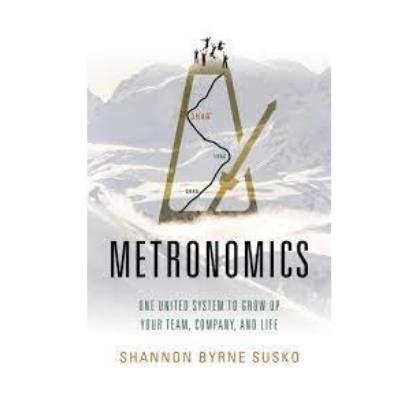
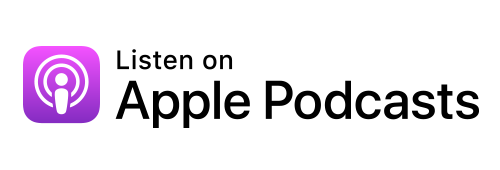

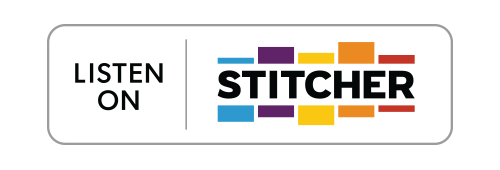


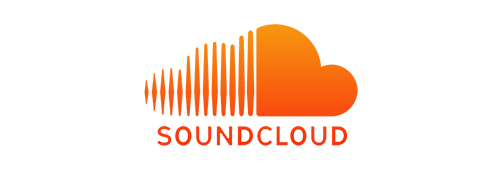

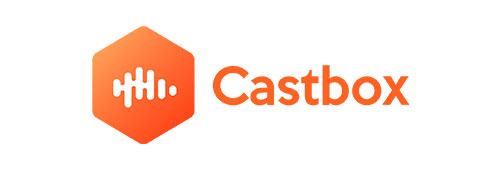
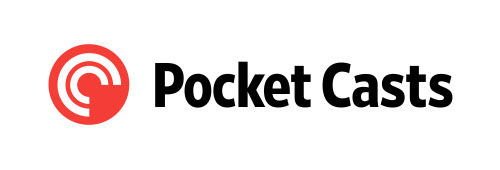
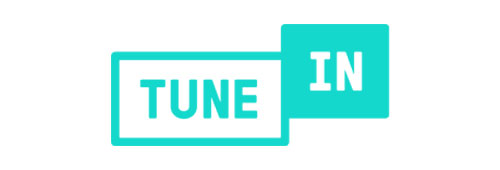
Leave a Reply